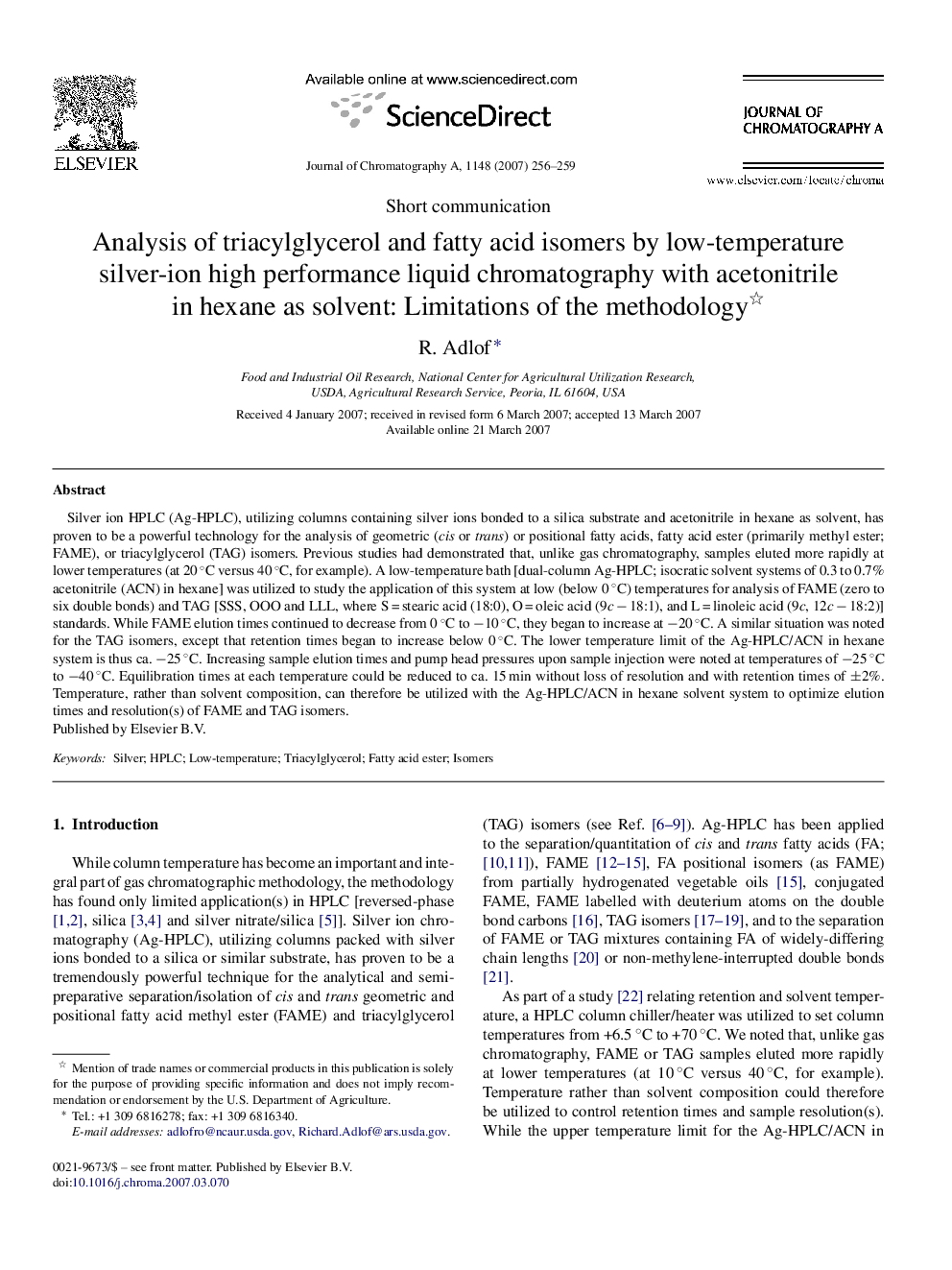| Article ID | Journal | Published Year | Pages | File Type |
|---|---|---|---|---|
| 1209256 | Journal of Chromatography A | 2007 | 4 Pages |
Silver ion HPLC (Ag-HPLC), utilizing columns containing silver ions bonded to a silica substrate and acetonitrile in hexane as solvent, has proven to be a powerful technology for the analysis of geometric (cis or trans) or positional fatty acids, fatty acid ester (primarily methyl ester; FAME), or triacylglycerol (TAG) isomers. Previous studies had demonstrated that, unlike gas chromatography, samples eluted more rapidly at lower temperatures (at 20 °C versus 40 °C, for example). A low-temperature bath [dual-column Ag-HPLC; isocratic solvent systems of 0.3 to 0.7% acetonitrile (ACN) in hexane] was utilized to study the application of this system at low (below 0 °C) temperatures for analysis of FAME (zero to six double bonds) and TAG [SSS, OOO and LLL, where S = stearic acid (18:0), O = oleic acid (9c − 18:1), and L = linoleic acid (9c, 12c − 18:2)] standards. While FAME elution times continued to decrease from 0 °C to −10 °C, they began to increase at −20 °C. A similar situation was noted for the TAG isomers, except that retention times began to increase below 0 °C. The lower temperature limit of the Ag-HPLC/ACN in hexane system is thus ca. −25 °C. Increasing sample elution times and pump head pressures upon sample injection were noted at temperatures of −25 °C to −40 °C. Equilibration times at each temperature could be reduced to ca. 15 min without loss of resolution and with retention times of ±2%. Temperature, rather than solvent composition, can therefore be utilized with the Ag-HPLC/ACN in hexane solvent system to optimize elution times and resolution(s) of FAME and TAG isomers.
